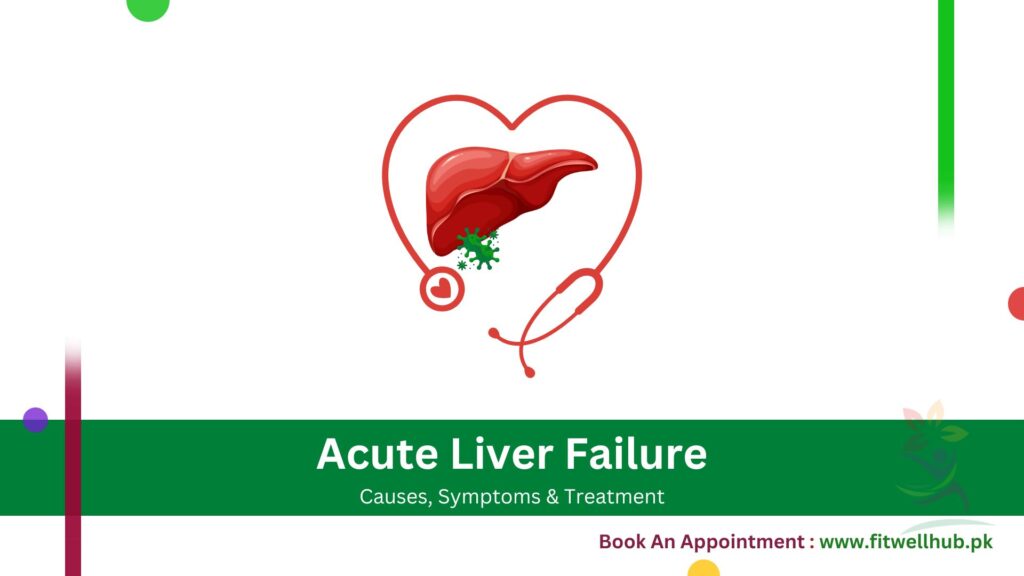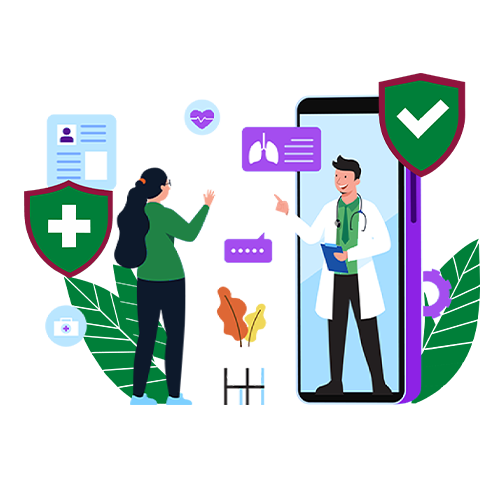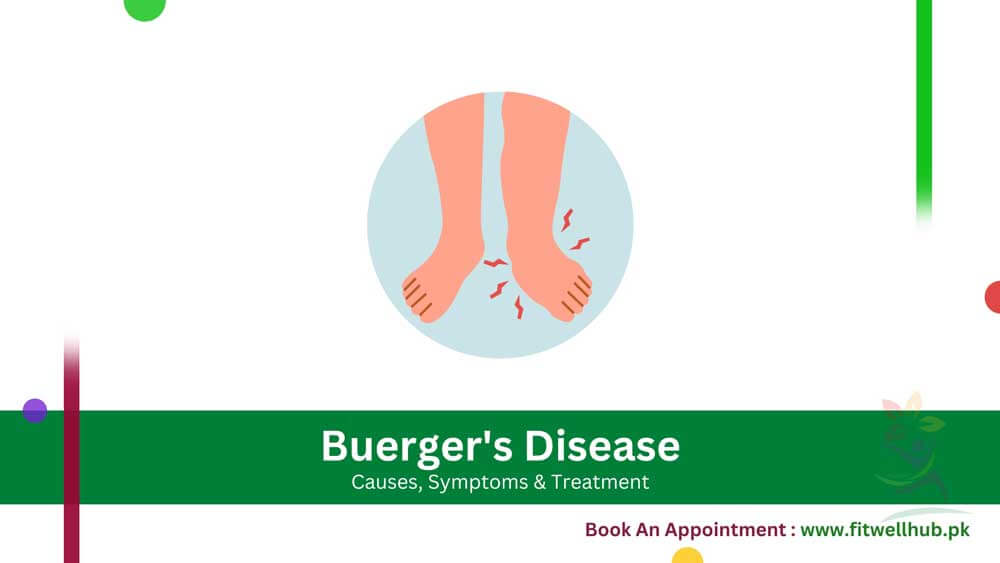Acute liver failure is the sudden loss of liver function. It happens when the liver suddenly stops working perfectly. Due to sudden interruption in liver functionality toxins and waste products accumulate in the body. Delaying immediate treatment for liver failure can make it life-threatening. In severe cases, doctors recommend a liver transplant to save the patient’s life.
Quick Links
ToggleCauses & Risk Factors
There are several causes of acute liver failure including drug toxicity, viral infections, autoimmune diseases, and metabolic problems. A few of the most common factors are:
- Excessive usage of acetaminophen (Tylenol)
- A, B, or E hepatitis is an example of viral hepatitis.
- Unusual drug responses
- Hepatitis caused by autoimmunity called Wilson disease
- Acute fatty liver in early pregnancy
Some individuals are at higher risk due to their underlying medical conditions, family history, or poor lifestyle habits. Among these risk factors include:
- Continuous and excessive alcohol consumption
- Underlying liver disease
- Some medications or nutritional supplements
- Exposure to poisons or toxins
- Complications of pregnancy
- Heredity diseases impacting liver function
Symptoms
Symptoms can appear suddenly and are highly severe. The most common symptoms are:
- Jaundice (an individual may experience yellowing of the skin and whites of the eyes)
- Burning sensation and pain in the abdomen
- Nausea
- Vomiting
- Loss of appetite
- Shivering in the body
- Weakness and exhaustion
- Confusion, disorientation, or altered mental state
- Easily bruised or bleeding
- Swelling in the abdomen or legs (Edema)
- Fever
When to See a Doctor
You need to consult with a doctor if you are experiencing symptoms such as jaundice, severe abdominal pain, confusion, or fatigue. Prompt treatment is crucial for the best possible outcome. At FitwellHub we have experienced herpetologists who are specialized in diagnosing and treating.
Stages
Acute liver failure is generally classified into several stages based on the intensity and development of the disease.
- Hyperacute Liver Failure: This type is the most intensive and develops quickly. Its symptoms appear within 7 days of the first trauma.
- Acute Liver Failure: This stage is characterized by the beginning of the symptoms within 8 to 28 days of the first trauma.
- Liver Failure: In this stage, the beginning of symptoms occurs between 4 and 26 weeks after the first trauma.
Diagnosing
The following diagnostic tests are:
1- Blood Tests
A blood test is used to measure liver enzymes and bilirubin levels. Additionally, other blood indicators are used to check the severity of liver failure.
2- Imaging Studies
To evaluate the liver’s anatomy and find root causes some imaging techniques like CT scans, ultrasound, or MRI are used.
3- Liver Biopsy
In this test, a small sample of liver tissue is taken and examined under a microscope. It will further identify the root causes of liver failure.
4- Neurological Evaluation
Hepatic encephalopathy is a common complication. For its identification, a patient’s mental status and neurological function are evaluated.
Treatment
Some commonly used treatment options for the cure are:
Supportive Care
Necessary fluids, maintaining electrolyte balance, and monitoring the patient’s vital signs and overall condition are included in supportive care.
Medication Management
Some medications are prescribed for specific causes of liver failure, like antiviral agents for viral hepatitis or antidotes for drug-induced toxicity.
Liver Transplantation
In severe cases, a liver transplant is the only treatment option. In this procedure, a damaged liver is replaced with a healthy one.
Liver-Assist Devices
Some specialized assistive devices are used to support liver symptoms temporarily. These are dialysis machines or bioartificial liver support systems until the patient recovers or waits for a transplant.
Guidelines for Effective Management
By following these guidelines can be managed and cured properly.
1- Early Recognition and Referral
Immediate identification and prompt consultation with a specialized liver center or transplant facility are important. They will improve the chances of survival.
2- Supportive Measures
For better managing complications, maintaining fluid and electrolyte balance, and providing nutritional support are crucial steps of the management plan.
3- Etiology-Specific Treatments
To tackle the root causes of liver failure, such as antiviral medications or providing antidotes for drug toxicity, is a significant step in the management process.
4- Liver Transplantation
For patients with severe or irreparable liver damage, liver transplantation is the last solution.
5- Continuous Monitoring and Adjustment
Continuous monitoring of the patient’s condition and proper use of treatment plans are crucial for optimizing results.
Complications Associated with Acute Liver Failure
Acute liver failure can cause a wide range of severe and life-threatening complications.
| Complication | Description |
|---|---|
| Hepatic Encephalopathy | Toxins accumulate in the brain, causing bewilderment, confusion, and even coma. |
| Coagulopathy | Acute liver failure disturbs the liver’s ability to produce clotting factors, increasing the risk of bruising and bleeding. |
| Renal Failure | The liver and kidneys work closely together; thus, acute liver failure can cause kidney dysfunction or failure. |
| Cerebral Edema | Excess fluid accumulates in the brain, increasing intracranial pressure and potentially causing life-threatening complications. |
| Infections | Acute liver failure weakens the immune system, increasing the risk of developing infections. |
Survival Rate & Prognosis
The survival rate and prognosis for individuals with acute liver failure vary widely, depending on the root causes, the severity of the condition, and the treatment plans.
Usually, patients with hyperacute liver failure have a survival rate of only 20-35% without a liver transplant. While acute liver failure patients have a survival rate of 40-70%. It depends on the causes and the availability of a liver transplant. Lastly, subacute liver failure patients have comparably better prognosis. Their survival rate is 50-80% without a transplant.
Frequently Ask Questions (FAQ’s)
Acute liver failure feels like stomach pain, jaundice, fatigue, encephalopathy, and coagulopathy.
Without a liver transplant, acute liver failure can cause death.
Loss of appetite and nausea are the early signs of liver failure.
Acute liver failure can cause fatigue, disorientation, confusion, and yellowing of the skin and eyes.
Some people recover from liver failure but some cannot. It depends upon the causes and severity of the disease. But liver transplant is the ultimate cure.














